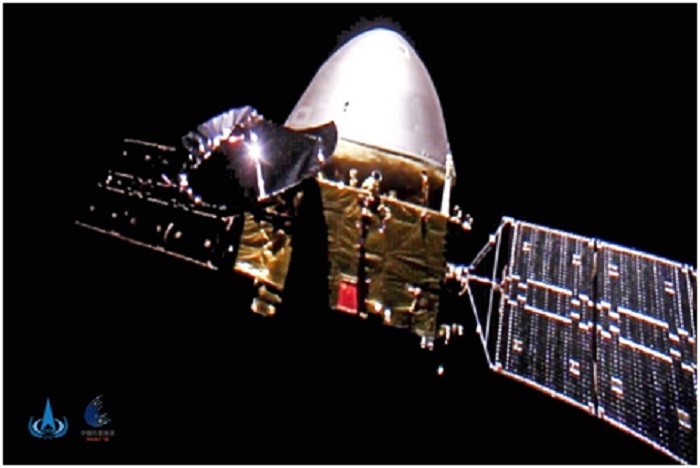



China is expected to conduct more than 40 space launches and realize new goals in space exploration in 2021, according to a report released on Feb. 24 by the China Aerospace Science and Technology Corporation (CASC), main contractor of China’s space program.
The country has made brilliant achievements in space exploration last year, when its new-generation carrier rockets such as Long March-5B and Long March-8 made maiden launches, its Chang’e-5 lunar mission brought moon samples back to Earth, the third generation of China’s BeiDou Navigation Satellite System, or the BDS-3, was completed, and the country’s first mission to Mars, Tianwen-1, was launched.
In 2020, countries in the world sent a record 1,277 spacecraft into space via 114 launches, among which 39 launches were conducted by China, said the report.
China sent 89 spacecraft into space last year, with the total mass of these spacecraft reaching a record high of 103.06 tons, an increase of 29.3 percent over the previous year, and China’s number of space launches and weight of payloads in 2020 both ranked second in the world, according to the report, which summarized global aerospace science and technology activities in 2020 and revealed CASC’s launching plans for 2021.
One of the highlights of China’s space cause in 2021 will be the launch of the core module of the country’s space station.
The Long March-5B Y2 rocket is scheduled to launch the core module of China’s space station in spring at the Wenchang Spacecraft Launch Site in south China’s Hainan province, according to Lin Yiming, head of the aerospace department of the CASC.
Following the maiden launch of the Long March-5B rocket in May 2020, which indicated the start of China’s space station construction, China has planned a total of 11 missions for 2021 and 2022 to build its space station, including three space station module launches, four cargo spaceship launches and four manned spacecraft launches.
In doing so, the country aims to complete the construction of the space station in 2022.
“We are going to build China’s first long-term orbital manned space station that will reach an internationally advanced level and then carry out large-scale space science research,” said Zhou Jianping, chief designer of China’s manned space program, who believes that space stations will play an important role in the frontiers of scientific exploration and the development of space technology.
The landing of China’s Tianwen-1 mission on Mars will be another major event in the country’s aerospace field this year.
On Feb. 10, the Tianwen-1 probe entered the orbit around Mars, becoming China’s first artificial satellite of Mars. On Feb. 24, it conducted the third orbital maneuver, entering a Mars parking orbit, with its closest point to the planet at 280 km, and the farthest point at 59,000 km. It takes Tianwen-1 about two Martian days to complete one circle on the orbit (a Martian day is approximately 40 minutes longer than a day on Earth).
The probe will stay in the orbit for about three months for scientific exploration and then land on the red planet in May or June.
This year, China will also launch a number of satellites for its civil space infrastructure system, including the Gaofen-5 02 satellite, Haiyang-2D satellite, Zhongxing-9B satellite, Fengyun-3 05 satellite, to meet the needs of users in various fields, such as ecological environment, natural resources, radio and television, and meteorology.
The CASC also plans to complete seven or so commercial launches in 2021.


The Executive and members of the.


The Acting Director, FCT Directorate of.


President Bola Ahmed Tinubu has been.



Barely a month after resignation of.


An Abuja based Legal Practitioner, Osuagwu.



Convener of Equitable Remedy, Mrs. Magaret.


Contractors handling the contract for city.


Nigerian government may have concluded plans.


The Diplomatic Correspondents Association of Nigeria.


A rights group, “Follow Me Talk.
Leave a Comment